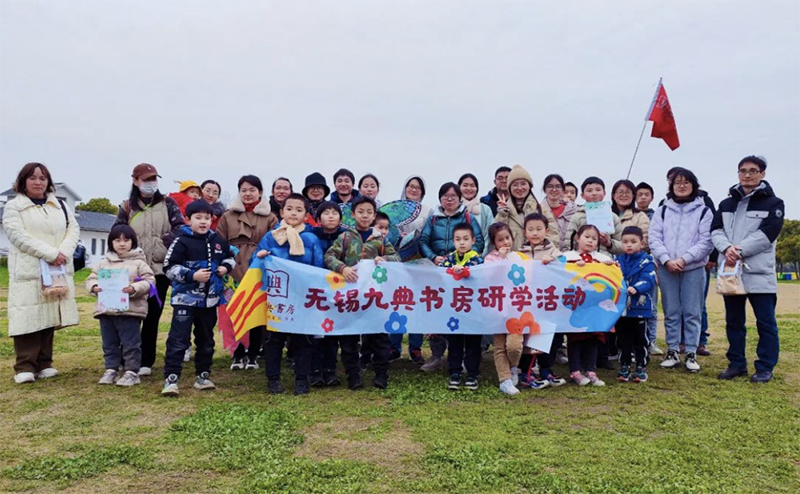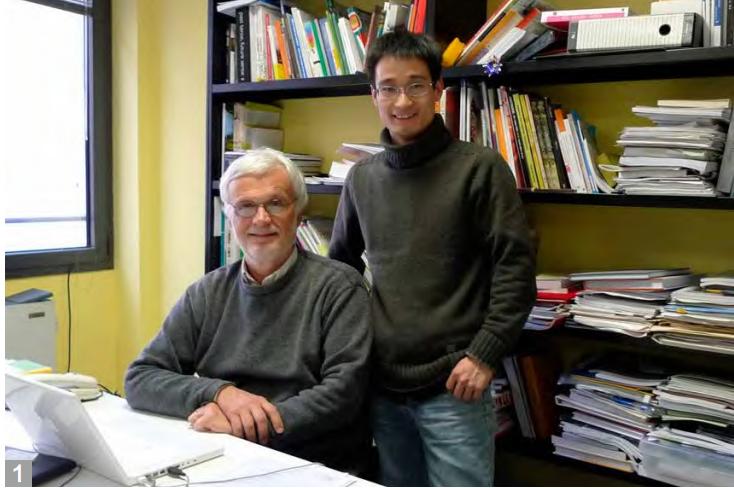For instance, in our course of Service Design, due to the systematic approach and diverse set of design tools inherent in service design, many students may solely focus on delivering course presentations and excessively rely on mechanical applications of various tools in problem-solving, neglecting in-depth analysis of underlying logic. It is crucial to emphasize that any theory or method is subject to constant innovation and evolution in practice and that these methods are not fixed and unchanging truths. Therefore, these design approaches should be continuously updated and adjusted based on actual needs and environments.
© 2023 by the authors. Published by Michelangelo-scholar Publishing Ltd.
This article is published under the Creative Commons Attribution-NonCommercial-NoDerivs 4.0 International (CC BY-NC-ND, version 4.0) license (https://creativecommons.org/licenses/by-nc-nd/4.0/), which permits non-commercial use, distribution, and reproduction in any medium, provided the original work is properly cited and not modified in any way.
Share and Cite
Chicago/Turabian Style
Yi Song, Miaosen Gong, and Zhewen Zhao, "DESIS in China:An Interview on Design Education and Social Innovation Design." JDSSI 1, no.2 (2023): 1-16.
AMA Style
Yi Song, Miaosen Gong, and Zhewen Zhao. DESIS in China:An Interview on Design Education and Social Innovation Design. JDSSI. 2023; 1(2): 1-16.
References
1. Ye Li, Jie Li, and Miaosen Gong, “Gong Miaosen: the Fundamental Concept of Social Design is ‘Keen Care’,” Design 36, no. 8 (2023): 42-47. [cnki]
2. “Labs,” Desis Network, accessed September 9, 2023, https://www.desisnetwork.org/labs/?filter_category=europe.
3. Miaosen Gong, “A Chronicle of DESIS-China,” Creativity and Design, no. 4 (2020): 14-19. [cnki]
4. Xin Liu, “The Notion, Evolution and Practices of Sustainable Design,” Creativity and Design, no. 2 (2020): 36-39. [cnki]
5. Fang Zhong, and Xin Liu, “Design for People, with People, by People: The Path, Challenge and Opportunity of Social Innovation Design,” ZHUANGSHI, no. 5 (2018): 40-45. [cnki]
6. Xin Liu, Ding He, Wei Wang, et al., “Lettuce House Sustainable Lifestyle Lab, Beijing, China, 2014,” World Architecture, no. 3 (2017): 167. [cnki]
7. Bosen Wang, Xin Liu, and Fang Zhong, “The Common Habitat: Design for Urban Biodiversity,” ZHUANGSHI, no. 1 (2023): 58-69. [cnki]
8. Xin Liu, Lin Zhu, and Nan Xia, “Build a Healthy Culture of Public Hygiene: Research on Ecological Public Toilet System Innovation Design,” ZHUANGSHI, no. 3 (2016): 26-29. [cnki]
10. Yinman Guo, and Tie Ji, “‘Social Transformation and Design Participation in Rural Cultural Construction,” ZHUANGSHI, no. 4 (2018): 39-43. [cnki]
11. Tie Ji, “Design for Poverty Alleviation Should Insist on ‘Local, Attendance and Online’-Ji Tie on Design and Poverty Alleviation,” Design 33, no. 18 (2020): 44-49. [cnki]
12. Tie Ji, Juncai Chen, and Yinman Guo, “Product-Service System Design of Food Culture Based on Dong Minority's Oil-tea,” Packaging Engineering 40, no.12 (2019): 42-48. [cnki]
13. Yongqi Lou, “An Acupunctural Sustainable Design Approach: Strategic Design of Chongming Xiaoqiao Sustainable Community,” P Creativity and Design, no. 4 (2010): 33-38. [cnki]
14. Yongqi Lou, “NICE 2035: An Experiment of Design Driven Community-supported Social Innovation,” ZHUANGSHI, no. 5 (2018): 34-39. [cnki]
15. Miaosen Gong, Zi Yang, Binbin Zheng, et al., “Co-creation Mechanisms and Interactive Relationship in Community Empowerment,” Chinese Art, no. 4 (2019): 76-85. [cnki]
16. Miaosen Gong, “New Formats of Agriculture and Rural Economy and Related Design Values,” ZHUANGSHI, no. 1 (2022): 26-31. [cnki]
17. Miaosen Gong, “Service Design towards Social Innovation: The exploration in JU DESIS Lab,” Creativity and Design, no. 2 (2017): 100-104. [cnki]
DESIS-China and Social Innovation
Work and Achievements
Promoting Social Innovation
Thus far, DESIS-China’s six DESIS labs have made significant achievements in exploring and practicing social innovation based on their respective research topics. For example, at Tsinghua University, Liu Xin [4] and Zhong Fang [5] have conducted research on ecological agriculture [6, 7] and the toilet revolution [8, 9]. Ji Tie at Hunan University has worked on rural revitalization [10], poverty alleviation [11], and new channels [12]. Lou Yongqi, at Tongji University, has been involved in projects such as Chongming Island [13] and Nice 2035 community development [14]. The public service team at Jiangnan University has worked on projects such as KEYIHUI [15] (Figure 3) , organic agriculture [16], and traditional private school education (Figure 4). Li Jian, at Guangzhou Academy of Fine Arts, has focused on rural development. These extensive efforts have applied the concepts and design methods of social innovation to address specific social issues in China. Through such research on various topics at different universities, the Chinese design education community has accumulated a wealth of practical cases and gained a deeper understanding of social innovation in the Chinese context. These practical cases represent significant achievements of DESIS-China, promoting the development of social innovation and social design in the Chinese design field. Professor Gong thus emphasizes the following:
The concrete implementation of design innovation activities is not just a matter of the designers' own ideas. Through the research experiences and accumulations in our respective fields, we have reached a consensus: it is necessary to consider how to deepen the practice and case analysis of social innovation in the Chinese context—this is the direction we strive for. In this regard, some important achievements have become valuable reference cases. Currently, DESIS labs have played a significant role in promoting and leading social innovation in China, and we will continue to work hard to promote practical and research efforts in this area.
Communication and Promotion
As one of DESIS-China’s Labs, the JU DESIS Lab is an important academic exchange platform within the DESIS network. Since 2010, Jiangnan University has been hosting the DESIS International Seminar annually (Figure 5). Additionally, social innovation and sustainable design have been consistently promoted as important topics in other academic events organized by DESIS-China members. Given that all six members of DESIS-China are top design schools in China, they exert strong driving forces and influence in collectively promoting this emerging field, making it a research “hotspot.” Furthermore, service design, closely related to the concepts of social innovation and sustainable design, has experienced rapid development in China in recent years.
Differences And Similarities of Social Innovation in Eastern and Western Contexts
“Social design revolves around social issues, and the different cultural and social contexts in the East and the West will manifest significant differences in the understanding of social problems, as well as some commonalities [1].” Both the East and the West face similar issues regarding vulnerable groups. For example, people with disabilities worldwide commonly face difficulties in transportation and have similar needs. In terms of public space and facility design, addressing the concerns of vulnerable groups is a prevalent social issue, and there are relatively mature design standards and solutions internationally that can be referenced. Although China currently has some gaps in terms of accessibility and inclusive design compared to developed countries, there is no significant difference in regard to the recognition and existence of this issue between the East and the West [1]. This is also a commonality of social innovation in both the Eastern and Western social contexts.
Nevertheless, the differences between Eastern and Western social innovation mainly lie in the following three aspects:
Microlevel Social Issue Differences
Homelessness is a typical and frequent target group in social design projects in Western societies, but this phenomenon is almost nonexistent in China. “China’s cultural factors (local complex), population management (household registration system), social security system (minimum livelihood guarantee), and urban management mechanisms, among other comprehensive factors, determine that there will not be a long-term and statistically significant homeless population [1].” Additionally, a series of social issues, such as immigration problems in European societies, do not exist in Chinese society.
Cultural Differences
“Due to differences in cultural beliefs and social governance systems, there are greater differences between Eastern and Western societies in terms of broad social issues [1].” For example, in Chinese society, which emphasizes family culture, “filial piety is the most important of all virtues.” Filial piety has been a traditional virtue in the Chinese nation since ancient times and is considered a basic moral norm, recognized by public order and good customs. In this cultural context, the approach to elderly care differs significantly from that in Western societies. Similarly, while gender issues receive significant attention abroad, they have not yet become a prominent social issue in China. Therefore, Professor Gong emphasizes,
DESIS in China:An Interview on Design Education and Social Innovation Design
Yi Song 1,
by
Miaosen Gong 1,
Zhewen Zhao1*
1 School of Design, Jiangnan University, Wuxi, China
* Author to whom correspondence should be addressed.
JDSSI. 2023, 1(2), 16-26; https://doi.org/10.59528/ms.jdssi2023.0912a7
Received: August 16, 2023 | Accepted: September 5, 2023 | Published: September 12, 2023
Introduction
Over the past decade, concepts such as social innovation, social design, and service design have received widespread attention in the Chinese design community. This phenomenon is closely related to the rapid development of the domestic service economy and reflects the transformation of design and design education. In this context, the active promotion and influence of Design for Social Innovation and Sustainability (DESIS) have played a crucial role, especially DESIS-China. Therefore, on August 28, 2023, the Journal of Design Service and Social Innovation invited Associate Professor Gong from the School of Design at Jiangnan University to conduct an interview on “DESIS in China” in Room C302 of the same School of Design (Figure 1). Professor Gong, PhD, Politecnico di Milano, is one of the founders of DESIS and currently serves as a member on the DESIS International Coordination Committee. He is also the director of the DESIS Lab at the School of Design, Jiangnan University (JU DESIS Lab).
This interview aimed to explore the development, practical effectiveness, impact, and future prospects of DESIS and DESIS-China. It concerned the following questions: 1. What kind of organization is DESIS-China, and what principles does it uphold? 2. What work has DESIS-China done in promoting social innovation or social design, and what are the results? 3. What are the differences in social innovation between the Eastern and Western contexts? 4. What similarities and differences exist between the work of DESIS-China and the efforts of the West in social innovation practices? 5. What role has DESIS-China played in Chinese design education over time, particularly in cultivating students’ social responsibility, innovative thinking, and sustainable design? Below, the content of this interview is not presented in a question-and-answer dialog format. Instead, we have organized it into several main sections to discuss the role and impact of DESIS-China in design and design education.
Background and Position of DESIS-China
DESIS is an international academic network organization founded by Professor Ezio Manzini of Politecnico di Milano in 2009 focusing on sustainable design and social innovation (Figure 2). As one of the most active academic organizations today, DESIS has been promoting exploration, communication, and collaboration in this field within the global design academic community for many years. The Design for Social Innovation and Sustainability in China (DESIS-China) is an internal academic organization affiliated with DESIS, established in parallel with it in 2009. DESIS and DESIS-China jointly advocate taking on more exploratory responsibilities and missions, making full use of teaching and research resources, and promoting the development and dissemination of social innovation and sustainable design.
Currently, the DESIS Network has 60–70 members (DESIS Labs) worldwide. “DESIS Labs are groups of academics, researchers and students who orient their design and research activities towards social innovation. They operate at the local scale with local partners and, in collaboration with other DESIS Labs, they actively participate in large-scale projects and programs [2].” “DESIS Labs of DESIS-China includes the following: Academy of Arts & Design, Tsinghua University, Beijing;School of Design, Hunan University, Changsha; School of Design, Jiangnan University, Wuxi; College of Design and Innovation, Tongji University, Shanghai; College of Design, Guangzhou Academy of Fine Arts, Guangzhou; School of Design, The Hong Kong Polytechnic University, Hong Kong [3].” The inclusion of these six representative and influential universities in China has further enhanced the influence of DESIS-China.
Social innovation, a cutting-edge research field, was initially not well understood; it was not even considered a direction for design research. However, it is now widely accepted in the academic community, allowing its natural integration into areas such as design research and design education. This transformation has been facilitated by the research and promotion efforts of DESIS in this field, which have yielded significant results.
In the manifestation of specific issues, the first difference lies in behavioral variations, but behind these behavioral differences are cultural disparities. With different fundamental understandings of social issues, the corresponding strategies will naturally differ significantly.
Taking poverty alleviation as an example, China has employed the power of the whole nation to address the issue of population poverty. Such a strong policy approach is unique to China, emphasizing the concentration of efforts to accomplish significant tasks. In Western societies, it is rare to see such centralized efforts, and problem-solving is often carried out by organizations at a grassroots level. Overall, Western societies tend to have a preference for bottom-up innovation, while China more typically combines innovation with top-down policies.
Differences in the Foundation of Civil Society
With social changes and urban development, interpersonal relationships have been generally weakened in society. In Western societies, religion plays an important role in grassroots governance, providing a strong foundation for civil society. In comparison, China is weaker in this aspect, and therefore, nongovernmental organizations (such as charitable organizations) have only limited roles to play. However, the Chinese government strives to address basic social issues such as poverty alleviation, rural revitalization, and basic support for disabled individuals. Thus, when engaging in social innovation work, charitable organizations provide incremental services based on the government’s basic efforts, which is a characteristic of social innovation in China.
In terms of practical methods of social innovation, both Chinese and foreign design researchers advocate combining “bottom-up” and “top-down” approaches. However, given the differences in social environments, to some extent, the West has more favorable conditions for implementing the “bottom-up” approach. Civil society is better represented in social foundations, and there are numerous nongovernmental organizations working to address social issues. In China, the approach is more government-led and “top-down” when dealing with social problems:
Abstract
DESIS is a leading advocate and organization for social innovation and sustainable design, actively promoting international exchange and communication in design education for over a decade. Since its establishment in 2009, DESIS-China has had a significant impact on the field of social innovation design and design education in China. The Journal of Design Service and Social Innovation invited Associate Professor Miaosen Gong from the School of Design at Jiangnan University for a special interview. The interview covered various topics including the establishment, development, and organizational structure of DESIS, the remarkable achievements of DESIS-China in the field of social innovation, the differences in social innovation between Eastern and Western contexts, the influence of DESIS on design education in China, and the prospects for the future development of DESIS. In this study, based on research and analysis from different perspectives, a relatively comprehensive understanding of DESIS is formed, highlighting the practical effectiveness of DESIS-China in the Chinese design education community while promoting the global dissemination and exchange of Chinese social innovation concepts.
Development and Prospects of DESIS-China
Against the backdrop of the service economy, Chinese design education is undergoing a new transformation, presenting both opportunities and challenges. While Western theories and methods possess unique values, they may not necessarily be applicable to China’s educational environment and cultural background. Instead, it is necessary to ground them in local problem contexts. Furthermore, as China’s influence on the international stage continues to grow, it will have to shoulder increasing international responsibilities. However, Western theoretical approaches may not be sufficient in tackling issues of sustainable development in a globalized context. As Professor Gong emphasizes, amid the challenges posed by the localization of Western design methods in China, designers need to avoid the pitfall of bookishness and maintain a pragmatic attitude; they should consistently adhere to the principle of seeking truth from facts:
Table of Contents
- Abstract
- Introduction
- DESIS-China and Social Innovation
- The Impact of DESIS-China on Design Education in China
- Development and Prospects of DESIS-China
- Acknowledgments
- Conflicts of Interest
- References
The Impact of DESIS-China on Design Education in China
The Catalytic Role of DESIS-China
The establishment of DESIS-China has promoted the development of sustainable design and social innovation in the field of design education in China. At the outset of DESIS-China’s establishment, sustainable design and social innovation had been seldom explored by the Chinese academic community. However, with DESIS-China’s proactive promotion of sustainable design and social innovation, the Chinese design community has begun to pay attention to the overall pattern and ethical issues of design, arriving at a profound understanding: sustainable design and social innovation must be based on the social responsibility of designers or researchers, a prerequisite. Therefore, DESIS-China’s promotion has made sustainable design and social innovation a hot topic of research and has had a positive and far-reaching impact on the field of design education. Regarding this, Professor Gong suggests,
DESIS-China has played a crucial role in promoting the paradigm shift of design education in China. With the transformation and upgrading of domestic industries and social development, the discipline of design has been rapidly evolving while introducing a series of emerging design fields, such as design thinking, interaction design, user experience, service design, social innovation and social design. DESIS-China design institutions have actively contributed to the introduction and development of these emerging design fields, not only providing a fresh disciplinary outlook to design education in China but also enriching the connotation of the entire design education system. They have provided students with more abundant learning opportunities and cultivated their ability to adapt to future challenges in the field of design.
Therefore, when exploring social innovation in the Chinese context, it is important to leverage the advantages of top-down policies.
Acknowledgments
We would like to express our gratitude to Professor Miaosen Gong, Director of JU DESIS Lab, for consenting to the interview and providing valuable insights. Some of the information presented here is derived from the transcription of the interview recording.
Conflicts of Interest
The authors have no conflicts of interest with respect to the research, authorship, or publication of this article.
In the future, Chinese design education needs to adopt a dual-track approach, avoiding one-sidedness or loss of independent judgment. First, by assimilating excellent theories and methods from the West, China can enhance its own educational system. Second, in the context of globalization, it should transcend traditional boundaries, embrace a broad vision, and bravely confront future challenges. It is evident that to meet the requirements of the times, Chinese design education must confront and address interdisciplinary issues, preparing itself for future development while making positive contributions to economic growth.
In recent years, in the field of design education, our main focus has been on guiding students to pay attention to the field of social innovation, making it a recognized research direction and a new area of study. Only when everyone recognizes the driving role of design innovation in social development can it have a positive impact on our overall design education.
The Development and Position of the JU DESIS Lab
In fact, the establishment of JU DESIS Lab predated the formation of the international DESIS network. From September to December 2008, Jiangnan University collaborated with Politecnico di Milano in organizing a large-scale international service design workshop titled “Chita08: Service Design for Chinese Social Innovation.” It was during this period that Jiangnan University established the “DESIS Research Center.” Then, on March 9, 2009, DESIS-China was officially established [3]. Subsequently, as one of the initiating institutions, the DESIS Research Center was renamed “JU DESIS Lab” in 2011 [17]. Since then, JU DESIS Lab has engaged in a significant amount of pioneering and exploratory work in relevant research fields, resulting in a positive social impact.
JU DESIS Lab specializes in two academic directions within the Chinese context, social innovation design and cultural traceability, as well as design innovation. Its applied research and practical explorations primarily concentrate on areas such as organic agriculture and food networks, proactive welfare and public services, health care and population aging, and cultural traceability and traditional private school education. As Professor Gong points out, the main focus of the JU DESIS Lab is to cultivate students' design capabilities, broaden their design perspectives, and deepen their design thinking, while emphasizing the development of their practical skills:
In conclusion, the School of Design at Jiangnan University, through its DESIS Lab, maintains an esteemed position as an explorer and leader in the dissemination of design education and concepts in China. The institution’s forward-thinking research and practical explorations also provide robust support for social innovation and sustainable design development in China.
For instance, in the corresponding courses (Figure 6), each student group engages in collaborative exchanges with practitioners from nonprofit organizations or local governments. This practical collaboration requires students to gain an in-depth understanding of project contexts, propose feasible solutions, and thereby fulfill course tasks, extending even to graduation thesis topics. By integrating theoretical instruction with social practice, students are able to apply their acquired knowledge and skills in authentic environments, achieving mutually beneficial outcomes with societal institutions.










